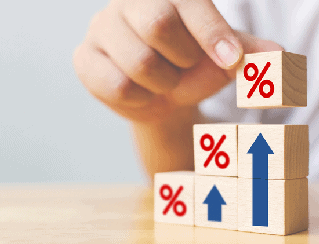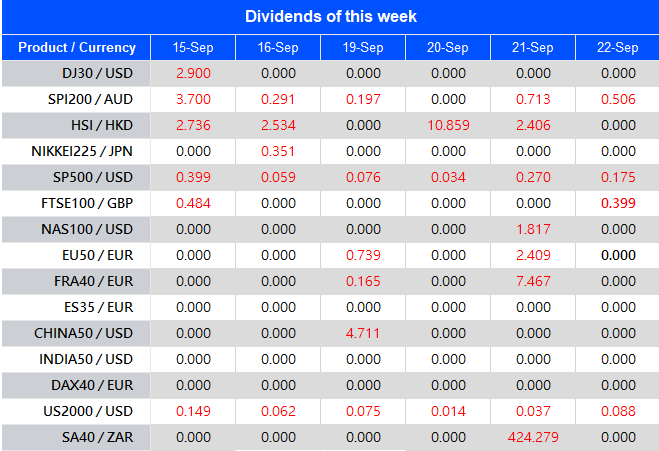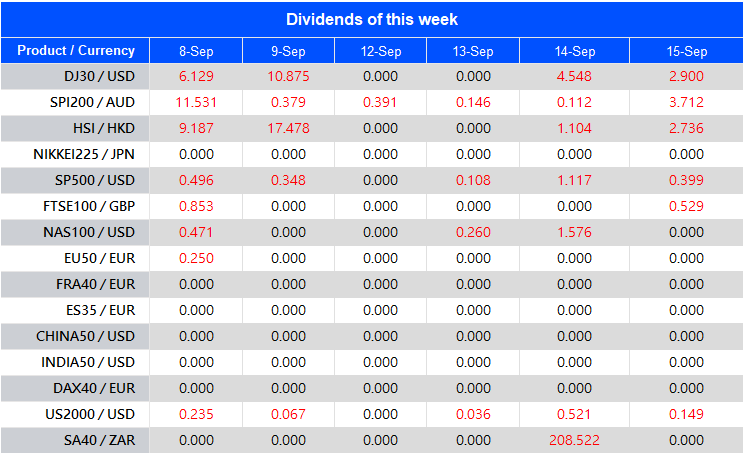In a general sense, correlation is something you’ll be looking for as you analyse and assess the forex market. While correlation does not always equal causation, it can still be useful in forecasting and predicting future market movements — techniques that will become increasingly important as you learn how to trade forex in a more advanced manner.
But, while correlations can be found in all forex data sets, currency correlations relate to something a bit more specific. So what are these currency pair correlations, and why do you need to know about them as a trader?
Understanding currency correlations and correlation trading in forex
When we discuss correlated forex pairs, we are basically talking about either three or four currencies arranged into two pairs. If one currency is shared between two pairs, there will be three currencies in total — and there will be four currencies if there is no such sharing. For example, if you are examining the AUD/USD and GBP/USD pairs, there are three currencies in total, but if you examine the AUD/USD and GBP/EUR pairs, there are four.
Forex correlation pairs are currency pairs that tend to exhibit movement patterns at the same time. If the movement of one pair appears to trigger the movement of another pair, there would be a correlation between the two.
But an FX correlation does not necessarily mean a move in the same direction. If an upwards or downwards movement of a certain pair appears to trigger the same in another pair, these pairs would have a positive correlation. If an upwards or downwards movement of a certain pair appears to trigger the opposite movement in another pair, these pairs would have a negative correlation.
This idea of “appearing to trigger” is important. Just because sets of currency pairs display a correlation does not mean they will always move in the expected direction. Nor does it mean that they will necessarily move to the same degree or with the same magnitude. There is always an element of uncertainty when it comes to trading on the forex market.
However, correlations do provide useful signals that traders can utilise as they make predictions and forecast future movements. With a careful, considered and conservative approach, you can start to grow your understanding and learn more about forex correlations and how they work.
Examples of positive and negative correlations
We’ve touched on positive and negative correlations above, but which currency pairs fall into these categories? Take a look at a few examples.
Positively correlating FX pairs
Positive forex correlation pairs are not all equal. Some will tend to correlate more closely, replicating each other’s movements almost exactly in some cases. Others will move only slightly in the same direction, but will show a repeated correlation over time.
Some of the most correlated pairs include:
- The AUD/USD pair against the NZD/USD pair.
- The EUR/USD pair against the GBP/USD pair.
- The EUR/USD pair against the USD/CHF (Swiss Franc) pair.
- The GBP/USD pair against the USD/CAD (Canadian Dollar) pair.
- The GBP/USD pair against the USD/CHF pair.
Bear in mind that these pairs may not necessarily correlate at all times, and that strong correlations between other pairs may emerge over time.
Negatively correlating FX pairs
Just like with positive currency correlations, negative correlations are also far from equal. There will be some negatively correlating pairs that more closely match the magnitude of each other’s movements, while others may move only slightly. Identifying and understanding these negative correlations is an important part of forex trading.
Some examples of negatively correlating FX pairs include:
- The USD/CHF pair against the EUR/USD pair.
- The GBP/USD pair against the USD/CHF pair.
- The USD/CAD pair against the AUD/JPY pair.
- The USD/JPY pair against the AUD/USD pair.
- The GBP/USD pair against the USD/JPY pair.
Again, bear in mind that negatively correlated forex pairs do not provide guarantees into future market movements. You will need to take care when you trade, and remember that a loss is possible even if you expect a strong correlation.
Analysing currency correlations
When you look at a currency pair, you will be looking at value movements measured in pips. Pips in fx are the smallest price movements that will register on the FX market trading platform, generally at the fourth decimal place. So, if a value increases from 1.4323 to 1.4325, this is a movement of two pips.
Pips are certainly important in terms of currency correlations, as it is these price movements that allow analysts to identify correlations in the first place. However, the level of correlation between two pairs is not measured in pips, but is instead represented as a coefficient. Most traders will use these coefficients to choose correlations, although they may also want to look at the pip movements of each pair.
The coefficient will be a value between -1 and 1. A negative value suggests a negative correlation, while a positive value suggests a positive correlation. A value of exactly -1 or exactly 1 means this correlation will happen 100% of the time — in realistic trading terms, you are not likely to see either of these numbers.
Instead, you’re likely to see a coefficient like -0.75 or 0.69 — a decimal representation of a number less than 1. The closer this decimal is to -1 or 1, the stronger the correlation trend. So, a coefficient of 0.91 demonstrates a stronger positive correlation than 0.72, and a coefficient of -0.89 suggests a stronger negative correlation than -0.61.
Trading with currency correlations
When you trade on the forex market, you are likely to use currency correlations in one of two ways.
● Gathering evidence for forecasting
You may notice a trading signal or indicator that suggests a specific price movement for a currency pair. While these signals and indicators are useful when deciding on a trading strategy, it’s not unusual for traders to want to gather more information before they make a decision one way or another.
Looking at forex pairs that correlate with one another can provide this additional insight. For instance, you may predict that a pair is going to move in a specific direction, and you identify a history or correlation with another pair. A movement in this second pair will provide supporting evidence that suggests your prediction was correct, and you may decide to open a position as a result. You may also decide to increase your exposure to market forces by trading on the margin or by leveraging your forex position — just remember that this also raises the risk level for the trade. There are no guarantees of success, but this is an example of a considered strategy used by experienced traders.
● Hedging other trades
Correlating forex pairs are also used in hedging strategies, where FX traders seek to mitigate the risk of one position by opening another. Understanding the correlations between different pairs is useful here, as traders can recoup some of their potential losses with a trade in the opposite direction.
The most obvious way to do this is to use negatively correlating forex pairs. You may open a position — either buying (long) or selling (short) on one currency pair, and then open the same position on a negatively correlating pair. If your first position fails, you will still make a return on the second position, provided that the correlation occurs as expected.
However, you can also hedge with two positively correlated pairs. To do this, you would open a position on the first pair — either a long or a short position — and then open the opposite position on the second pair. Again, if the first position fails, you would still make some return from the second position if the correlation is realised, mitigating your losses to some extent.
When you trade with currency pairs, you need to be aware of spreads. The spread is the difference between the buying and selling prices for a pair, and this essentially represents the fee you will need to pay to open a position. With hedging on currency correlations, you will be opening two positions rather than one, which means you’ll need to pay two sets of trading fees. This makes it doubly important to keep spreads in mind.
Begin trading currency pairs and analysing correlations with VT Markets
Use our platform to grow your trading experience and build your strategy. Set up a demo account to familiarise yourself with the market and our tools, then trade for real on a live trading account. Want to learn more about our platform? Get in touch with our team today.
FAQs
Which forex pairs are most correlated?
One way that traders try to realise the benefits of forex is by looking at correlations, but some correlations are stronger than others.
The AUD/USD and the NZD/USD, and the EUR/USD and the GBP/USD are two of the strongest positive correlations. Meanwhile, the USD/CHF (Swiss Franc) and the EUR/USD, and the GBP/USD and the USD/CHF display two of the strongest negative correlations. However, remember that this is subject to change, and the correlation is never guaranteed.
Which currency pairs work together?
To find the currency pairs that work best together, look at the exchange rate coefficient. This coefficient will be a number between -1 and 1. A coefficient of close to 1 represents a strong positive correlation, while a coefficient of close to -1 represents a strong negative correlation.
How is the currency correlation coefficient calculated?
It requires a complex calculation to arrive at the currency correlation coefficient. This calculation takes into account the mean value at closing for each pair over a specified time period. The mean closing value for Pair 1 is represented in the formula as X, while the mean closing value for Pair 2 is Y.
Using these values, the coefficient = ∑(X− X)(Y− Y) / √(X− X)² √(Y−Y)²
Most traders will use online tools built into the forex platform as they analyse coefficients, so they do not need to do this calculation themselves.







